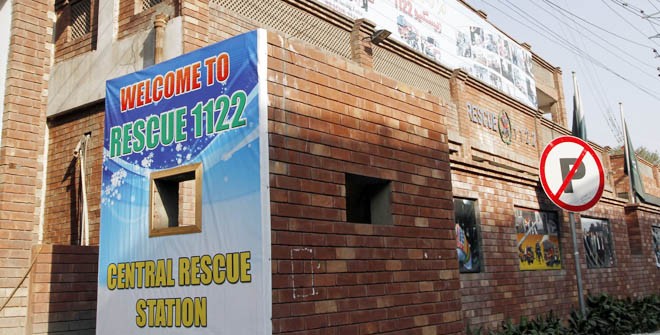

The Punjab Emergency Service Rescue 1122 receives 5,000 (approx.) calls daily from Lahore alone. Out of these, only about 350 turn out to be genuine; the rest are obnoxious and fake.
According to Sajjad Hussain, a Rescue 1122 official, "Between 2004-14, we responded to 1,681 fake calls in Lahore, which means the Emergency lost millions of rupees because of these fake calls, not to mention the many genuine cases it could not attend to.
"Fake and obnoxious calls hamper not only our services for those in need but also cause the only emergency service for Lahorites to waste its resources," he says. "For example, if there is a fire emergency, the rescue team would respond to it with a squad of five vehicles comprising two personnel each, a rescue van consisting of three personnel and an ambulance with three staffers.
"You can imagine how much a response call costs us. If there is a call for medical help, a rescue ambulance with a crew of three people reaches the spot. Unfortunately, despite strictly observing the Standard Operating Procedure (SOP), we end up wasting our time and resources on at least one fake call a day."
The official also says people start to flirt with the crew people on the phone. "They don’t realise that they are doing it at the cost of the time required to help the genuine cases of emergency. They are playing with the lives of others, not with the rescue personnel."
There are eight to ten call attendants at the Lahore Rescue office. "They cannot afford to engage themselves in long conversations with stray callers," he declares.
About the kind of content the obnoxious calls usually carry, the official says, "A girl was talking to one of the rescue workers on the phone: ‘Sir, how are you? I heard you have a training to put out a fire. Can you douse the fire that’s in my heart?’ On another occasion, a woman asked the recipe of biryani. Yet, on another occasion, a caller requested for a 20-kg flour bag for his home."
The number of fake callers is no less. Hussain relates how a 1122 staffer once received a call from a man who was crying and said there was fire in his house. "When our staff went to the place he had told us about, there was no sign of a fire. There were a few youngsters playing cards in a corner of the street. When a team member asked them if there was any fire in the area, one of the boys retorted, ‘Sir, actually, we phoned you to know if you would actually show up within seven minutes as you claim you do.’ Period."
A Punjab Emergency Service official, requesting anonymity, says the Rescue 1122 developed software called Standard Operating Procedure (SOP), in 2004 to be able to check fake and obnoxious calls.
"The software is supposed to keep track of calls and if a call is repeated for the 10th time, the software starts to flash the number, which means it’s a fake and should not be attended."
He says there is a six-month jail sentence and a fine of Rs50,000 for a fake caller.
Interestingly, while this punishment has been given to many a false caller, it’s not of much help because it involves a long process of litigation which Rescue 1122 cannot afford.
"There are 7,000 rescuers in Punjab and 800 in Lahore. Given this limited number of personnel you cannot get engaged in the activities other than those required for rescue. If we move court against the fake callers, we will have to devote our two or three rescuers permanently to carry out the process of litigation."
The official says the people should themselves act responsibly and must not disturb the rescuers with fake or obnoxious calls.